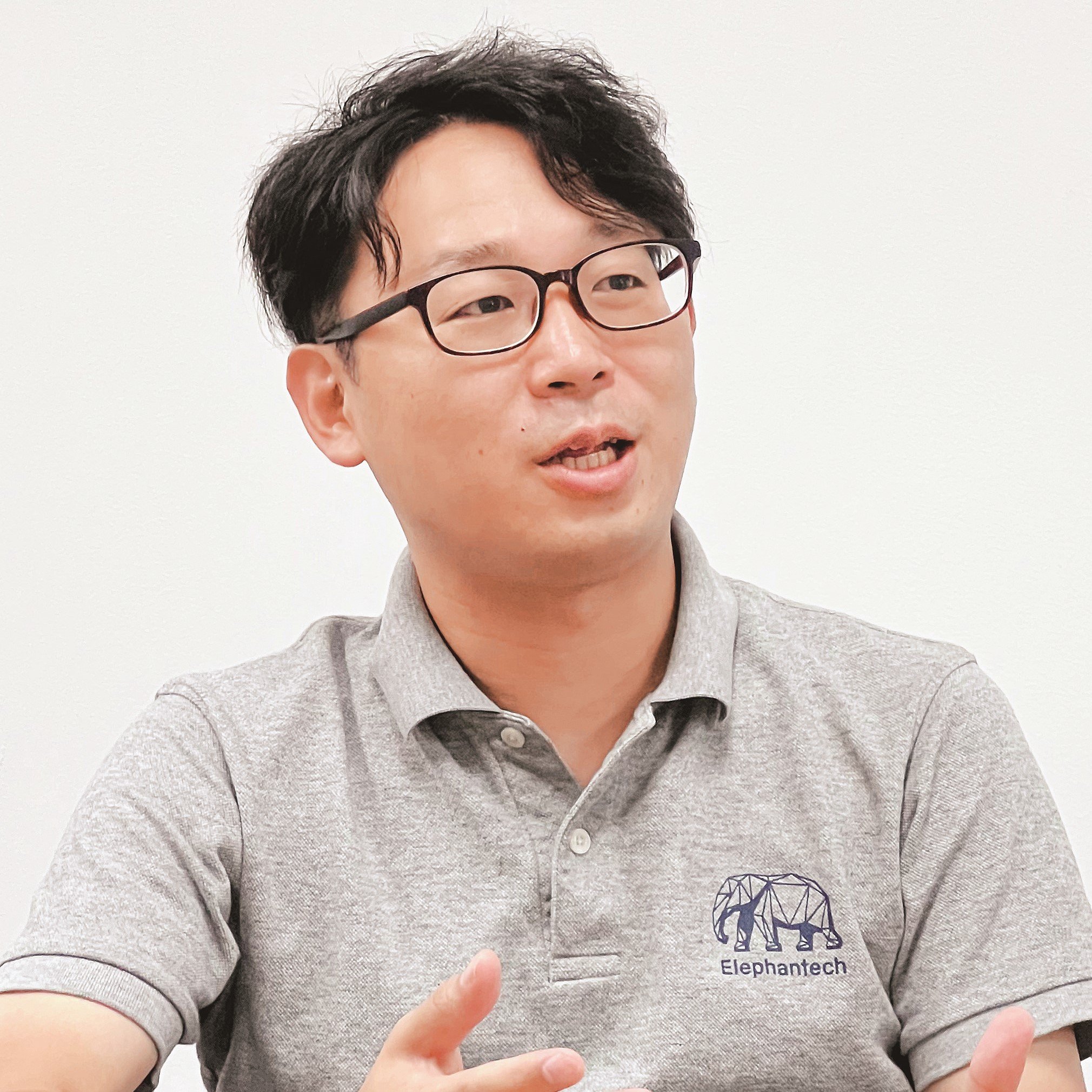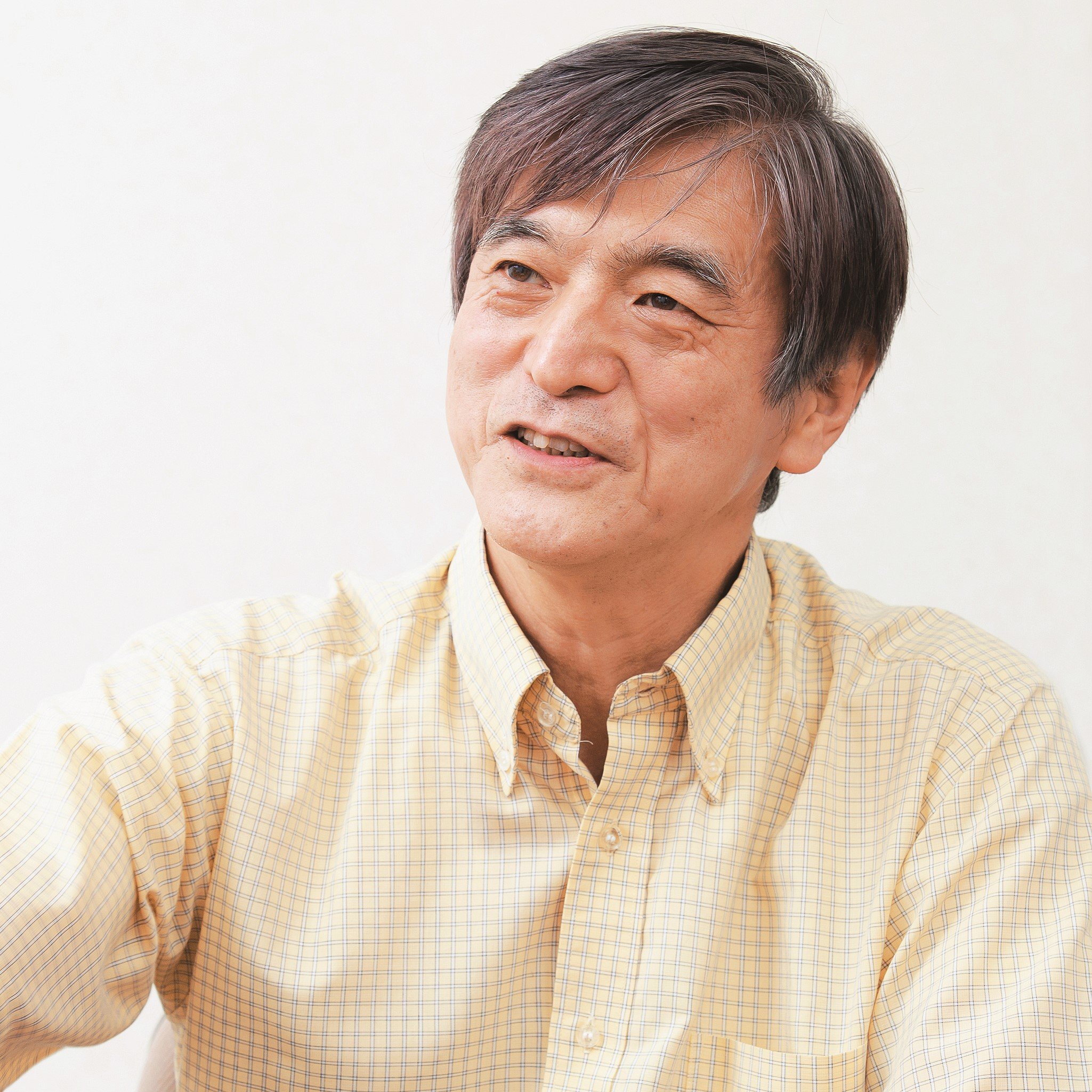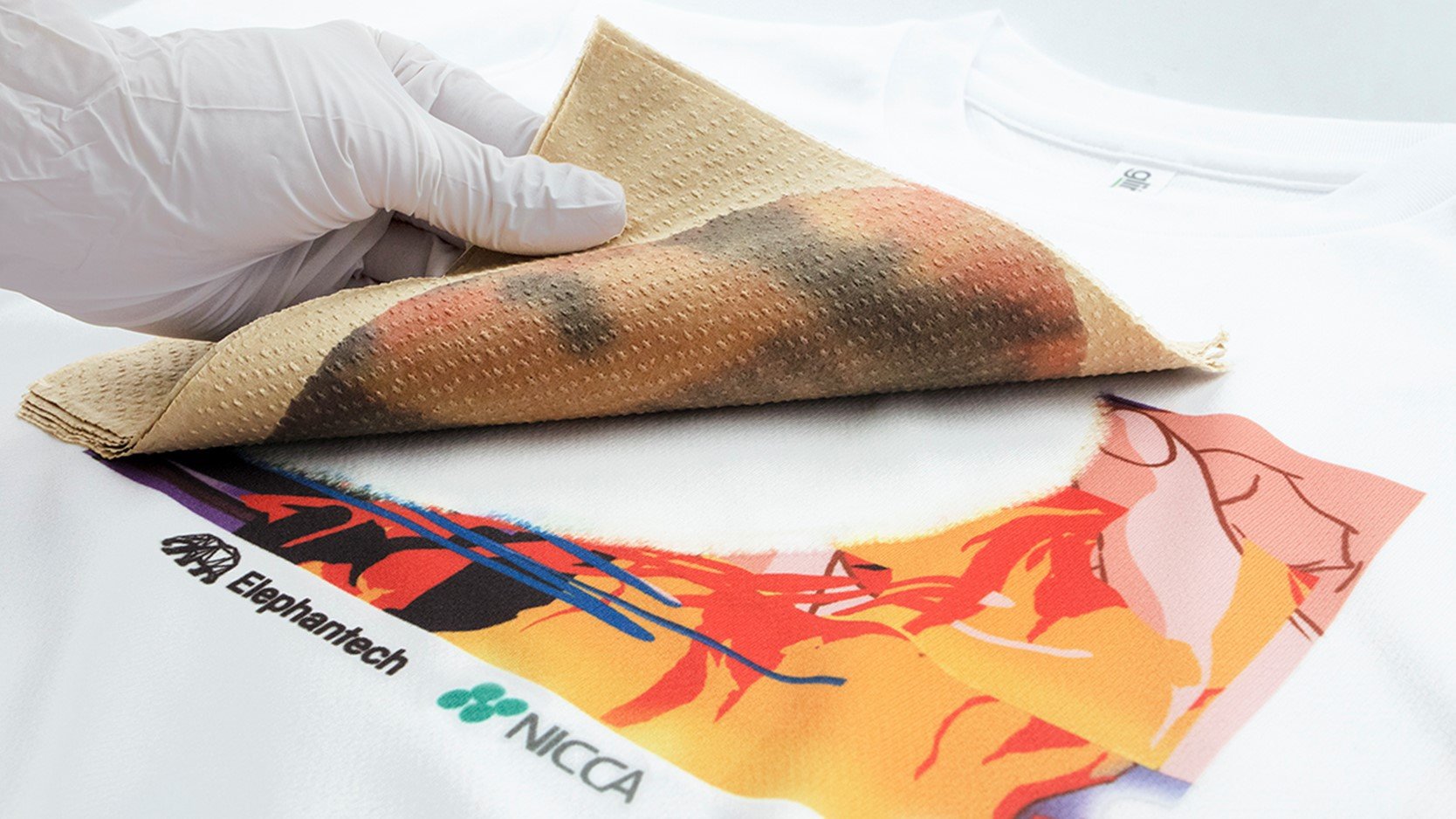Easily removing dyestuff from polyester fabric
Promoting reuse, and reducing waste and environmental Impact
Interviewed in August 2022
In April 2022, in collaboration with Elephantech Inc. (Chuo Ward, Tokyo) we developed chemicals and technologies for removing dyestuff from polyester fabric. In recent years, studies have found that the mass disposal of textiles amounts to 510 thousand tons(*1), and the impact on the environment has become a challenge for the industry. So, how do we connect these jointly-developed chemicals and technologies to effective utilization of textile products and reduced impacts on the environment? We asked Masaaki Sugimoto, senior vice president of Elephantech, and Mitsuo Matsuda, a fellow at our Institute of Surface Science and Technology, about how these chemicals and technologies were developed, and how they will be deployed in business from here out.
SUGIMOTO Masaaki
Senior Vice President,
Member of the Board
Elephantech Inc.

MATSUDA Mitsuo
Fellow (Innovation Promotion)
Institute of Surface Science and Technology

Concerns about mass disposal lead to development
― What led to this joint development?
Matsuda: Elephantech is a startup business that develops environmentally-friendly manufacturing technology. I met Mr. Sugimoto through X STUDIO(*2) sponsored by the city of Fukui. When we held a lecture meeting at the NICCA Innovation Center aimed at spurring innovation, I asked Mr. Sugimoto to be one of the lecturers. Afterward, several employees who were inspired by the content of the lectures, spontaneously launched in-house manufacturing activities under the name "MO-SO (delusional dream) Meeting". Their efforts deepened discussion about new product development. After that, a consultation from Mr. Sugimoto prompted us to begin development as part of these activities.
Sugimoto: Due to the postponement of international sporting events, there was a possibility that large volumes of clothing printed with sporting event logos would have to be thrown away. And we received a query from someone in the apparel business asking if we could develop a technique that would allow this clothing to be upcycled(*3). I knew about NICCA Chemical's technological prowess concerning textile processing, and their positive attitude towards open innovation. So, I approached Mr. Matsuda about joint development.
Matsuda: In response, our MO-SO Meeting members began to work on a prototype product.
Removing without water, using only heat
― What kind of technique did you develop?
Matsuda: It is a technique for removing dyestuff from polyester fabric. Polyester fabric are produced in great quantities, are used in a wide range of applications, and our company is very good at developing processing chemicals for them. We developed a chemical that would make printed patterns indiscernible, and in continuing our research, developed a technique which removed dyestuff even more cleanly than we had hoped. To be specific, we coat the area where we want to remove the color with our chemical agent. Then we place absorbent paper on top of this and apply heat. The dyestuff is removed by being transferred to the paper. Since the way the dyestuff moves is similar to paper chromatography, we call the technique "Neochromato process".
Sugimoto: Up until now, it has been generally understood within the industry that the dyestuff used on polyester fabric cannot be removed, right?
Matsuda: That's right. The structure of polyester fabric allows dyestuff to penetrate deeply into the fibers. Because of this, removing dyestuff has required environmentally-damaging chemicals, severe processing conditions, large volumes of rinse water, etc. This has made it uncommon.
Sugimoto: The Neochromato process turns this understanding on its head. Since the textiles can be printed with designs any number of times, the lifetime of textile products can be increased and waste products decreased.
Matsuda: This technique is environmentally-friendly, can be completed in a matter of minutes, and does not use any water.
― How much can this reduce the impact on the environment?
Matsuda: There are a variety of indicators, but it is said that making one item of clothing uses several thousand liters of water and produces approximately 25 kg of CO2(*4). We believe that extending the life of polyester fabric through the Neochromato process will provide more alternatives to throwing them away, and lead to a reduced burden on the environment.
Aiming to sell services that make upcycling a reality
― What kind of business do you plan to develop this into?
Sugimoto: First we aim to target "soft signage", such as the banners, tapestries, and flags used in exhibitions, large-scale events, or for PR in stores. These typically have a short lifespan, and are ideal for turning into a service. We are building a framework for cooperation that will enable us to provide an end-to-end service which includes collecting the material, removing the dyestuff, and reprinting it with new content. We plan to launch this business as soon as possible. Of course, we are also considering the possibility of extending this business to apparel products.
Matsuda: What we have developed provides a foothold for upcycling technology. As we consider the possibility of expanding the application of this technique to various materials, we will work to connect it to effective utilization of textile products which addresses the problem of large-scale disposal. We are now leveraging our domestic and international network to promote the technique to highly environmentally-conscious American and European sports apparel manufacturers, and working to ascertain the needs of the industry.
― Having engaged in open innovation, what do you think of it?
Matsuda: Open innovation is distinct for allowing you to accomplish things you could not accomplish alone, and for bringing about the unexpected. Another benefit is how it has connected us with businesses in the textiles industry with whom we had no previous contact.
Sugimoto: Corporate value is viewed differently from inside and outside of a company. I believe that this open innovation initiative has helped us to rediscover our corporate value, and will lead to maximizing it. There are likely many more areas where NICCA Chemical's interface science technology can help to reduce the burden on the environment. And I feel that there is hidden potential for further growth as a company that can be counted on by more than just the textiles industry.
Glossary
(*1) Mass disposal of clothing
Out of the 819,000 tons of new clothes provided in Japan in 2020, 510,000 tons of clothes were thrown away.
Click here for details (The Japan Research Institute, Limited Website "Environmental Impact Assessment" [Japanese])
(*2) X STUDIO
A program that brings together creative personnel from Tokyo and other urban areas with personnel from businesses in Fukui City, to discover the culture and local character of Fukui, gain insight into social trends, and create new businesses and projects.
(*3) Upcycling
Reusing parts of products, that have completed their service life and would otherwise be thrown away, so that they can be reborn as products with new value.
(*4) Environmental impact of one article of clothing
Click here for details (Government of Japan Ministry of the Environment Website "Sustainability Fashion" [Japanese])


